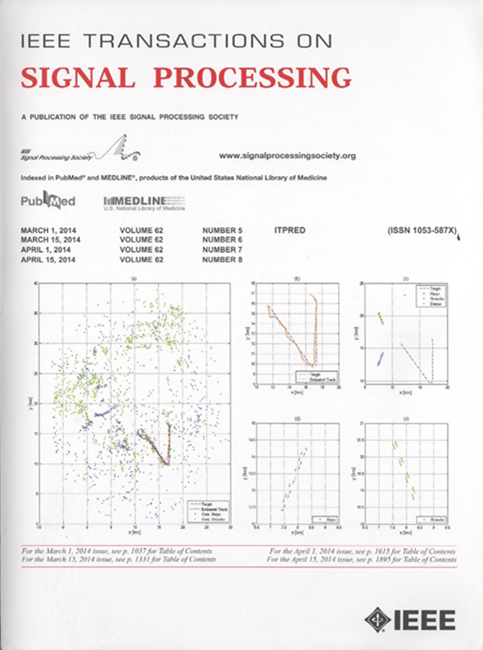Quaternion Information Filters With Inaccurate Measurement Noise Covariance: A Variational Bayesian Method
IF 4.6
2区 工程技术
Q1 ENGINEERING, ELECTRICAL & ELECTRONIC
引用次数: 0
Abstract
Quaternion Kalman filters (QKFs) are designed for state estimation in three-dimensional (3-D) space. To simplify initialization, this paper focuses on the quaternion information filter (QIF), which converts the information vector and matrix into quaternion form. While QIF demonstrates strong performance under the assumption of known quaternion measurement noise statistics, this assumption frequently does not hold in practical scenarios. To address this issue, a variational Bayesian adaptive QIF (VBAQIF) is proposed by modeling the inverse of the covariance matrix for the quaternion measurement noise as the quaternion Wishart distribution in this paper. First, the adaptive QIF is derived under the recursive Bayesian estimation framework to propagate the quaternoin information vector and information matrix. Then, the quaternion measurement noise covariance matrix together with the quaternion state is inferred using the variational Bayesian approach. Furthermore, a corresponding square root version, called variational Bayesian adaptive square-root QIF (VBASQIF), is developed to enhance numerical stability of VBAQIF, and this stability is analyzed from a theoretical perspective. Finally, a 3-D target tracking example is simulated to demonstrate that the proposed VBAQIF exhibits excellent performance even in the presence of uncertainties in the quaternion measurement noise covariance matrices.测量噪声协方差不准确的四元数信息滤波:一种变分贝叶斯方法
四元数卡尔曼滤波器(QKFs)用于三维空间的状态估计。为了简化初始化,本文重点研究了四元数信息滤波器(QIF),它将信息向量和矩阵转换为四元数形式。虽然QIF在已知四元数测量噪声统计量的假设下表现出很强的性能,但这种假设在实际场景中往往不成立。为了解决这一问题,本文将四元数测量噪声的协方差矩阵逆建模为四元数Wishart分布,提出了一种变分贝叶斯自适应QIF (VBAQIF)。首先,在递归贝叶斯估计框架下推导自适应QIF,传播四元数信息向量和信息矩阵;然后,利用变分贝叶斯方法推导出四元数测量噪声协方差矩阵和四元数状态。为了提高VBAQIF的数值稳定性,提出了相应的平方根版本变分贝叶斯自适应平方根QIF (VBASQIF),并从理论角度分析了VBAQIF的稳定性。最后,通过三维目标跟踪仿真,验证了该方法在四元数测量噪声协方差矩阵存在不确定性的情况下仍能保持良好的跟踪性能。
本文章由计算机程序翻译,如有差异,请以英文原文为准。
求助全文
约1分钟内获得全文
求助全文
来源期刊

IEEE Transactions on Signal Processing
工程技术-工程:电子与电气
CiteScore
11.20
自引率
9.30%
发文量
310
审稿时长
3.0 months
期刊介绍:
The IEEE Transactions on Signal Processing covers novel theory, algorithms, performance analyses and applications of techniques for the processing, understanding, learning, retrieval, mining, and extraction of information from signals. The term “signal” includes, among others, audio, video, speech, image, communication, geophysical, sonar, radar, medical and musical signals. Examples of topics of interest include, but are not limited to, information processing and the theory and application of filtering, coding, transmitting, estimating, detecting, analyzing, recognizing, synthesizing, recording, and reproducing signals.
 求助内容:
求助内容: 应助结果提醒方式:
应助结果提醒方式:


